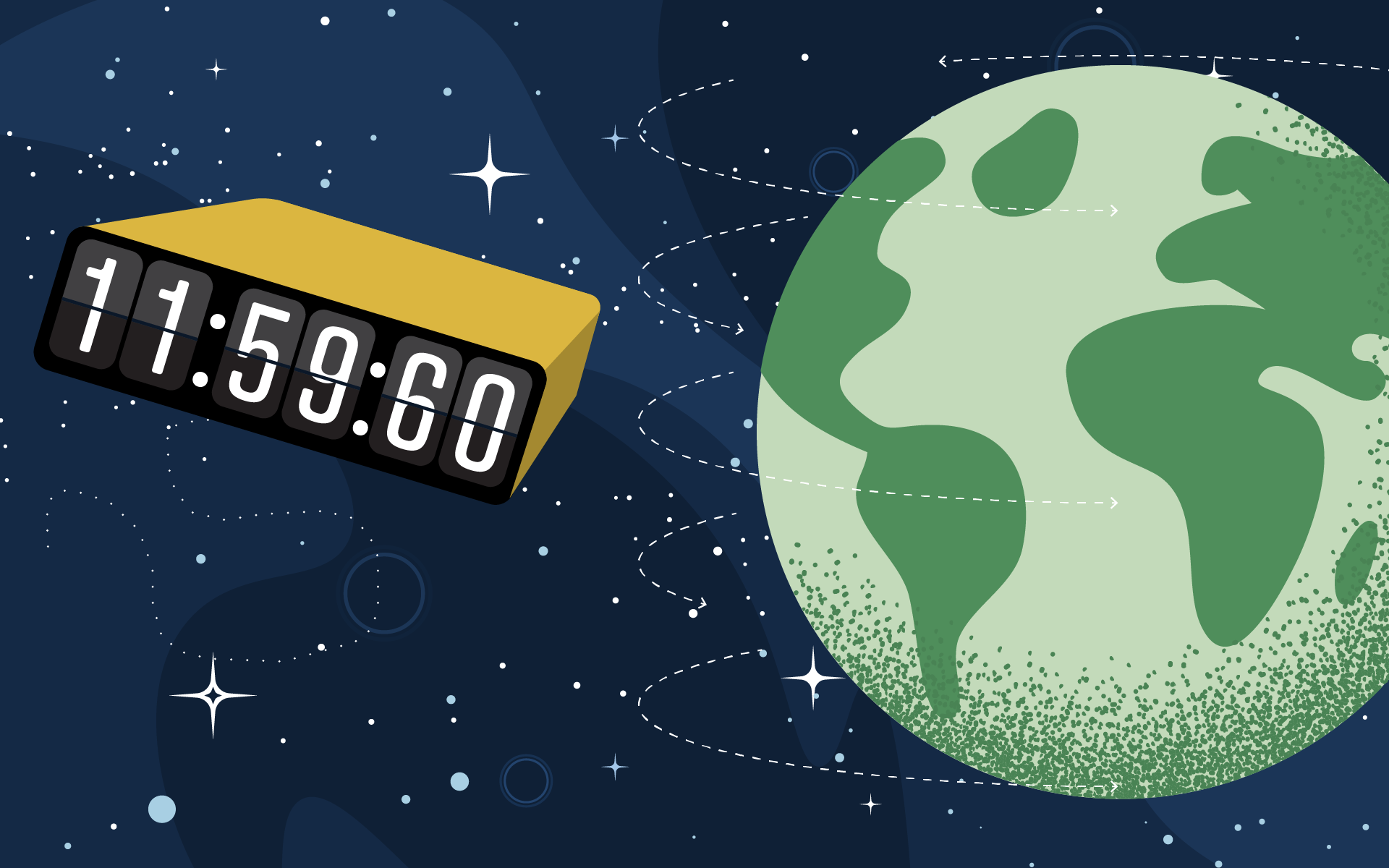Description

Disclaimer: Copyright infringement not intended.
Context
Glaciers are melting so fast that we may need to delay adding that 'negative leap second' to keep clocks aligned with Earth's rotation.
Details
- The recent study published in the science journal Nature sheds light on a fascinating aspect of how climate change, particularly the rapid melting of ice sheets in Greenland and Antarctica, is affecting the Earth's rotation and, consequently, our timekeeping systems.
Key takeaways
Impact of Melting Ice Sheets:
- The study highlights how the accelerated melting of glaciers and ice sheets due to rising global temperatures is leading to the redistribution of weight across the planet.
- This redistribution is causing a slight slowdown in the Earth's rotation on its axis, altering the rotation rate that our clocks and calendars are based on.
Coordinated Universal Time (UTC) and Leap Seconds:
- UTC, managed by scientists, is used to synchronize timekeeping worldwide.
- Leap seconds are periodically added to UTC to account for variations in the Earth's rotation, ensuring that atomic time and astronomical time remain in sync.
- Since the 1970s, leap seconds have been added 27 times to compensate for the Earth's slightly faster rotation.

Delay in Implementing "Negative Leap Second":
- Initially, scientists planned to subtract a "negative leap second" from UTC for the first time in 2026 to address the Earth's faster rotation.
- However, the recent study suggests that the accelerated melting of ice sheets has acted as a brake, slowing down the Earth's rotation sufficiently.
- Consequently, the need for the negative leap second may be postponed until 2029 or later, according to the study's findings.
Potential Challenges and Concerns:
- While delaying the implementation of the negative leap second may seem beneficial in the short term, it could pose challenges in the future.
- Adjusting timekeeping systems to accommodate a negative leap second may cause significant disruptions and headaches, especially for computer systems not designed to handle subtracting time.
- While the study suggests a potential delay in needing the negative leap second, some experts caution that the Earth's rotation is unpredictable.
- Demetrios Matsakis, a former chief scientist for time services at the US Naval Observatory, expresses skepticism about definitively predicting when or if the negative leap second will be necessary.
About Leap Seconds
- Leap seconds are adjustments made to Coordinated Universal Time (UTC) in order to keep it in sync with the Earth's rotation.
- These adjustments are necessary because the Earth's rotation is gradually slowing down due to tidal forces caused by the gravitational interactions with the Moon and other celestial bodies.
Background
- Origin: The concept of leap seconds was introduced in 1972 by the International Telecommunication Union (ITU) and the International Astronomical Union (IAU) to account for discrepancies between atomic time and Earth's rotation.
- Atomic Time vs. Earth's Rotation:
- Atomic Time: Based on the International Atomic Time (TAI), which relies on the vibrations of atoms, particularly cesium atoms.
- Earth's Rotation: Determined by astronomical observations, such as the time it takes for the Earth to complete one rotation relative to distant stars (sidereal day).
How Leap Seconds Work
- Occurrence: Leap seconds are typically added to or subtracted from UTC at the end of June or December, but not necessarily every year.
- Direction: Leap seconds can either be positive (added) or negative (subtracted) depending on the discrepancy between UTC and TAI.
- Frequency: Leap seconds are irregularly spaced and are determined by the International Earth Rotation and Reference Systems Service (IERS) based on astronomical observations.

Impact and Importance
- Precision: Leap seconds ensure that UTC remains within 0.9 seconds of mean solar time (UT1), preserving the accuracy of civil timekeeping.
- Technological Impact: Some computer systems and software require special handling to accommodate leap seconds, as they can potentially disrupt operations if not properly accounted for.
- Scientific Research: Accurate timekeeping is crucial for scientific research, particularly in fields such as astronomy, geodesy, and telecommunications.
Debates
- Disruptions: The irregular nature of leap seconds can pose challenges for certain systems, leading to debates over whether leap seconds should be abolished or replaced with a different system.
- Alternatives: Proposed alternatives to leap seconds include a continuous time scale without adjustments or a fixed schedule for leap seconds, among others. However, reaching consensus on a new system has proven challenging.
Conclusion
Leap seconds play a crucial role in maintaining the accuracy of our timekeeping systems by reconciling the precision of atomic clocks with the Earth's variable rotation. While they present challenges for certain technologies and systems, they are essential for ensuring the reliability and integrity of timekeeping on a global scale. As we continue to advance technologically, ongoing discussions and debates surrounding leap seconds will shape the future of timekeeping standards and practices.
|
PRACTICE QUESTION
Q. Melting ice sheets may postpone need for ‘negative leap second’. Critically Analyse this statement. (250 Words)
|














